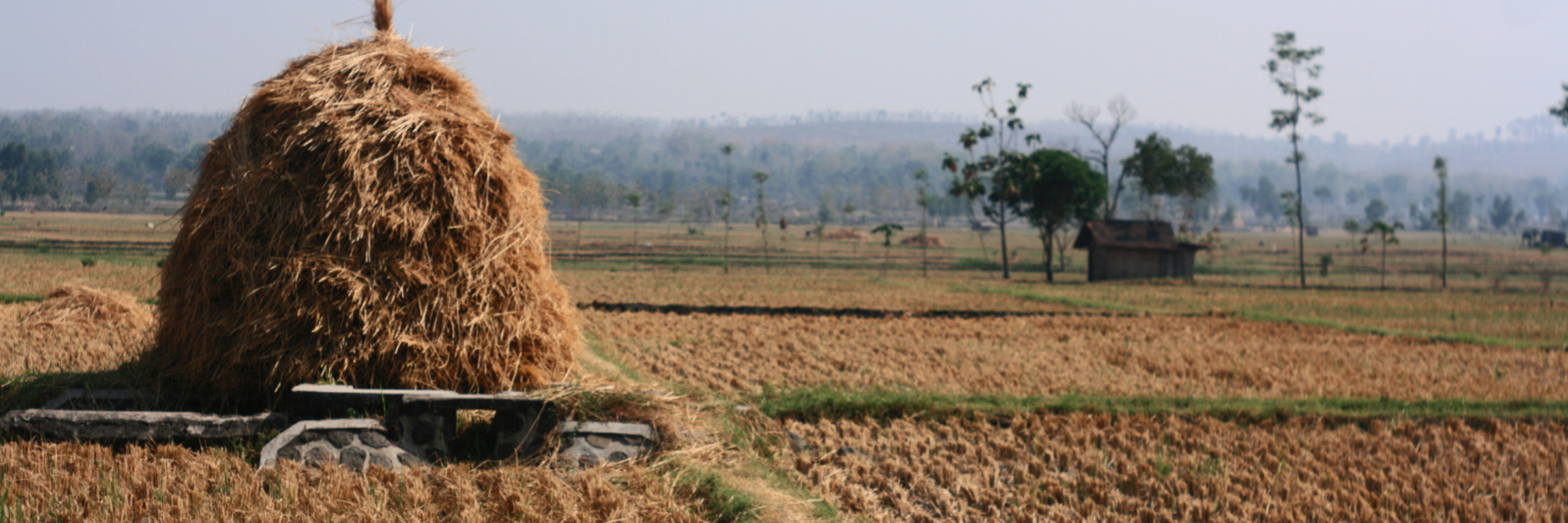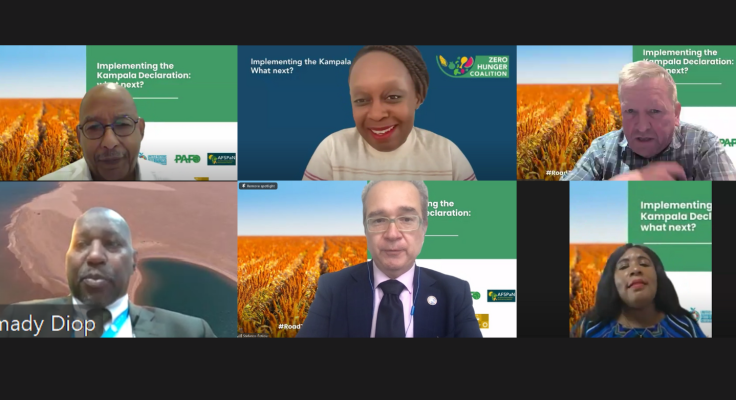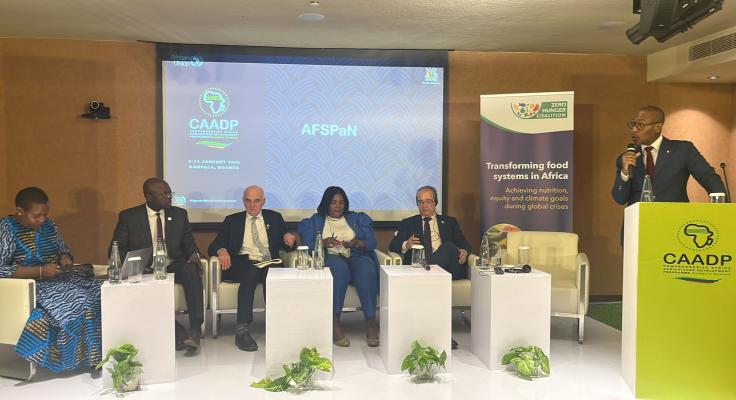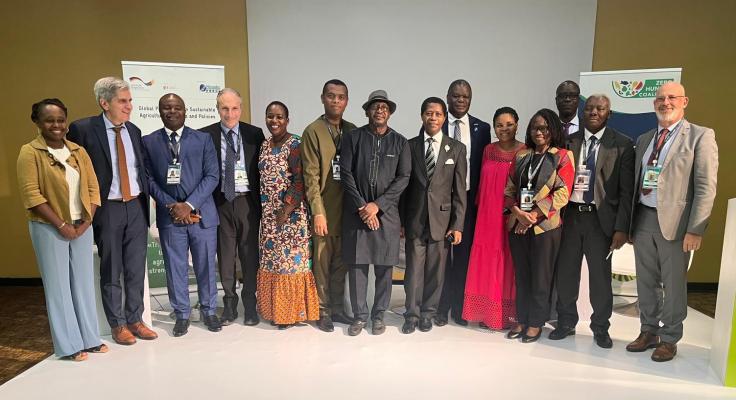
Solutions for reducing post-harvest losses in Zambia
According to the African Postharvest Losses Information System (APHLIS), farmers in Sub-Saharan Africa lose, after their harvest, between 9% and 18% of their cereals each year. Other analysts place post-harvest losses closer to 30% of agriculture, especially when also factoring in fruits and vegetables. Reducing post-harvest losses remains a persistently stubborn problem. While loss rates depend on country and cereal, very little progress has been made overall.
Yet, finding solutions to reduce post-harvest loss would help alleviate greenhouse gas emissions, food insecurity and increase the livelihood of small-scale producers. As the Ceres2030 summary report highlights, small-scale producer productivity and income are dependent upon access to post-harvest services such as storage, marketing information, processors, and food retailers.
Kabwe Chikolwa from the Shamba Centre for Food & Climate, is exploring how post-harvest losses can be reduced in Zambia. This is part of his research for the country’s Evidence-based and costed roadmap underway by the Zero Hunger Coalition.
“Huge amounts of food are lost between harvest and consumption. This is a big problem in Africa because of limited infrastructure and value-added food products,” he notes. “However, many interventions are not expensive. We need to change the practices of all participants in the value chain in their product handling to reduce wastage and thereby increase revenue and increase food security.”
Examining possible solutions
As the data from APHLIS shows, maize suffers from significant post-harvest losses. For Kabwe, this is due in large part to the storage facilities. “Maize losses can be attributed to the gaps in long-term storage facilities. We need to think about how we manage grain storage throughout the value chain and not only at the time of harvest.”
Kabwe cited the example of polythene bags which are used to store maize but are not effective. “We need to reduce our dependence on these bags and instead transition to high-tech material which is relatively less costly in the long-term. We also need to have areas that can store large quantities of maize for long periods of time without exposure to the sun, frost and rain as well and that prevent access to the commodity by animals, such as rodents,” he remarks. Other solutions include the use of seed varieties that are less affected by pests or making small silos available that could be used by a cluster of farmers in their community.
In Kenya, researchers have highlighted the significant loss of mangoes during their transportation in trucks. For Kabwe, simple and low-cost solutions can avoid such wastage. “By putting mangoes in reusable boxes that can be stacked and by using a protective buffer (such as grass, banana leaves and paper), we will avoid pressure and damage to the fruit. This is also relevant for other produce such as tomatoes, bananas and avocados.”
Focusing on indigenous crops
Many of the interventions to reduce post-harvest losses have traditionally focused on staple crops and high value commodities such as maize, soya beans and wheat. However, for Kabwe, more research is needed on interventions to safeguard indigenous crops such as millet. He notes that “the infrastructure exists for staple crops. Now, we should focus on indigenous vegetables that have limited investment and infrastructure.”
In Zambia, mushrooms and other vegetables that are foraged in the wild provide important nutrients. Yet, they are often only available during the rainy season. “How can we preserve seasonal products to make them available throughout the year? In Kenya and Ghana, for example, solar dryers are used to reduce loss and store these crops,” he remarks.
Kabwe also highlighted the importance of traditional methods of storage. Examples include the drying and pounding of groundnuts to preserve them as well as the drying of mushrooms. “We cannot disregard traditional methods but also need to explore how we can adopt these methods while also ensuring food safety. For example, research centres could investigate food drying methods that are safe and limit toxins,” he suggests.
Linking farmers to markets
The private sector can provide examples on how to reduce post-harvest losses. For example, in West Africa, the private sector has been able to successfully serve as the link between small scale farmers of fonio and markets. As urban areas continue to grow, improved connection between production areas with cities will become essential.
Another example, from Malawi and Zambia, has been the adoption of a decentralized storage model. According to Kabwe, small clusters have emerged where farmers can receive training, purchase their seeds and fertilizers and store their harvest in smaller grain silos. Post-harvest losses have been reduced and commodities made readily available to larger producers.
Kabwe noted that large silos are used to store national food reserves by the government. However, many of these silos are now dilapidated. Rather than rehabilitating them or building new ones, Kabwe suggests that it may be more beneficial to transition towards a new storage model that focuses on facilitating trade and easy transportation. “We need storage that can be easily mounted onto trucks. The private sector has begun doing this to facilitate grain transportation for trading and processing. We can learn from these experiences.”
Yet, the question remains on the type of infrastructure investment that is needed. While grain storage is essential, it is also important to invest in road networks that connect the areas of production with the storage space and, ultimately, to the market.
As Kabwe notes, a holistic approach is needed that addresses post-harvest loss from the seeds to the storage to the transportation. “All stakeholders along the value chain will need to change their practices and reduce wastage. Doing so will not only increase revenue but also food and nutrition security.”



